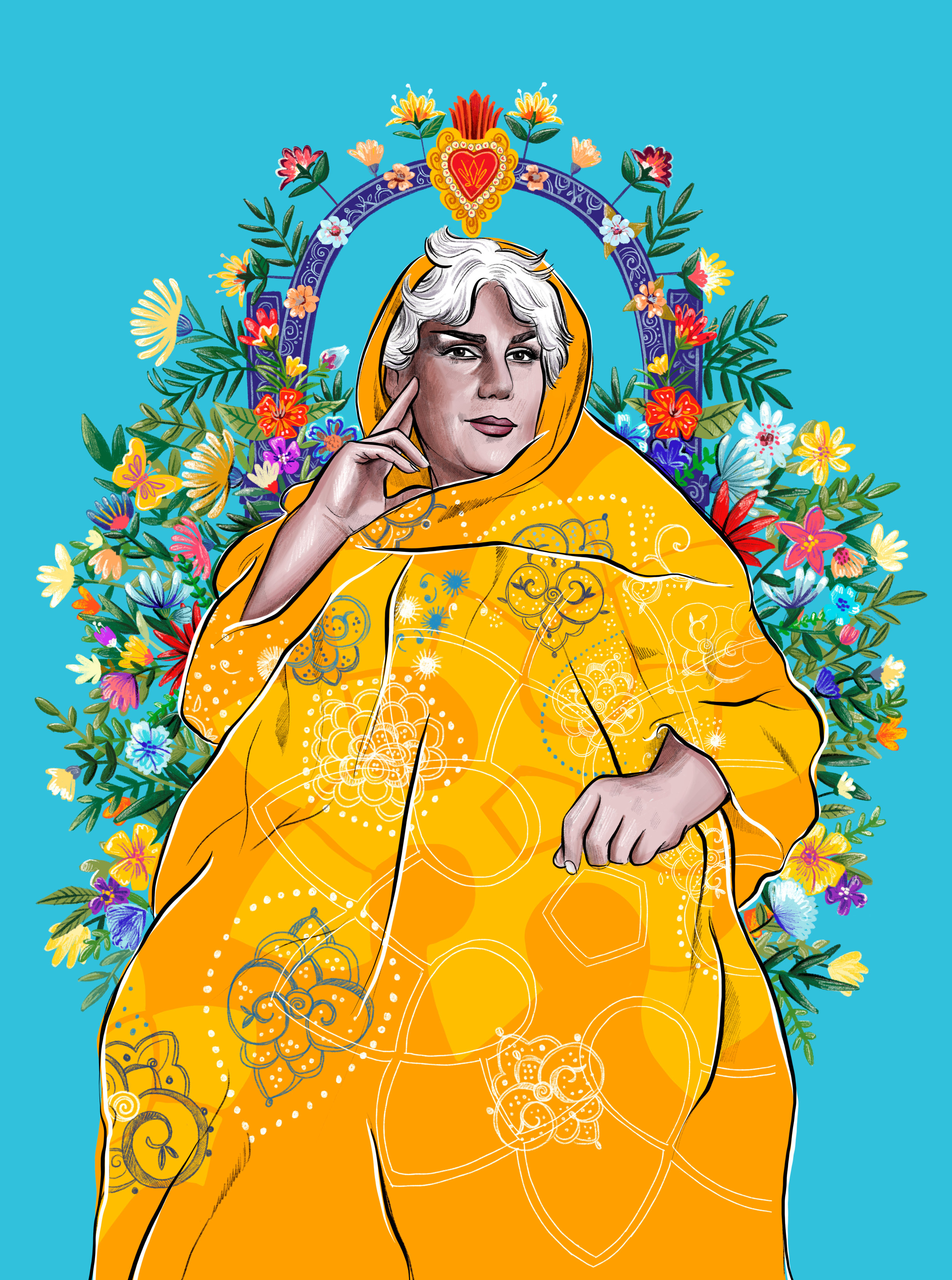The following is a sample profile from the book Holy Troublemakers & Unconventional Saints by Daneen Akers.
Maryam Molkara
One day in Iran, a woman named Maryam had to dig deep inside of herself and find an enormous amount of courage. She needed to try to change a law in her country. But in order to try to change it, she knew she might be hurt or put in prison. But she had already been imprisoned and treated badly for being honest about herself, and she knew something had to change. She also knew she was the best person to try to bring about that change.
You see, Maryam was transgender. When she was born, her parents and doctor thought she looked like a boy, and so that is how they thought of her. Inside, however, she always knew she was a girl.
“When I was very small, I used to scream when they tried to dress me in boy’s clothes,” Maryam said. “Every night I prayed for a miracle, but in the morning I looked at my body, and it hadn’t happened.”
Illustration by Justine Lecouffe
When she was older, she got a job as a nurse in a hospital where she was known for her gentle hands. A doctor who worked there was also transgender, but he was a transgender man who had already fully transitioned to living as a man. One day, Maryam confided to him that she felt like she was really a woman. He told her that he understood, and he told her his story. He explained to her what it meant to be transgender. She had never realized that other people also had similar experiences of being born in a body that looked on the outside like one gender, but on the inside, they knew they were another. She felt so much better knowing she was not alone, and she began to start dressing as a woman much of the time. She also took hormones that helped her body look more like a woman’s.
When Maryam finally told her parents about her true self, they were very upset. She decided to go to a religious authority, as both she and her parents were very devout Muslims. Maryam’s struggles grew harder in 1979 when Iran had a revolution, and the government of the country was taken over by strict religious leaders. Rules about how people had to look, dress, and behave got stricter; there were especially strict rules about gender roles. Maryam was punished on several occasions for dressing like a woman and even got thrown into prison. She was lucky to have connections with powerful people who helped her get out. She was forced to take a hormone to make her look more like a man. She had to grow a beard, something expected of men under the new religious leaders.
Maryam was miserable; she knew she was a woman yet was forced to look and live like a man. She decided she needed to visit the most powerful religious leader in the country, Ayatollah Khomeini, to ask for permission to live as the woman she knew inside that she was meant to be. She knew this was a big risk. And yet she knew she had to try.
She went to the compound where Ayatollah Khomeini’s office was. She placed a pair of shoes around her neck, a well-known symbol in her country of someone seeking shelter and refuge. She also carried a Quran to help convey the message that she came in peace. Unfortunately, the Ayatollah’s guards did not honor her symbols of peace and shelter and began to beat her. To them, she looked like a man dressed in a suit with a beard. They thought she had come to harm the Ayatollah.
“I am a woman! I am a woman!” Maryam cried out.
The Ayatollah’s son, hearing her cries, came outside to investigate. He intervened and told the guards to stop. He brought Maryam to his father. Maryam began to tell her story, and her story touched the hearts of everyone in the room.
Maryam’s courage paid off. She walked out of the Ayatollah’s office with a letter giving her legal and religious permission to seek the medical treatment she needed to safely and fully live as a woman. The letter he gave her not only gave Maryam freedom to live her life as her authentic self, but it gave other transgender Iranians the same religious and legal permission. She later started an organization to spread awareness and help other transgender people know about their rights. She is remembered today as a trailblazer. Maryam’s bold and risky walk into the Ayatollah’s office had forever not only changed her life but the lives of other transgender people in Iran, too.
Have you ever had to do something that felt scary in order to be true to yourself?
Glossary Terms
Ayatollah
A title of respect given to scholars who have shown expert knowledge of Islamic law and religion.
Gender
A person’s internal sense of being a boy, girl, or somewhere in between.
Gender Roles
An idea about the behaviors, jobs, and roles that are appropriate for a person of a particular gender; these change over time; examples of these include the outdated and not accurate, “all nurses are women; all police officers are men.”
Hormones
Chemicals our bodies make that help our bodies change into their adult selves; adult bodies also have hormones that affect health and mental function.
Muslim
A follower of the religion of Islam.
Quran
The sacred book in Islam, written in Arabic and believed to be the word of Allah as dictated by the prophet Muhammad.
Trailblazer
A person who makes a new pathway; an innovator.
Transgender
The opposite of Cisgender; when your gender identity (how you feel inside) is different than what sex doctors/midwives assigned to you when you were born (boy, girl, or intersex).
Read another sample chapter from the Holy Troublemakers & Unconventional Saints book by Daneen Akers.



